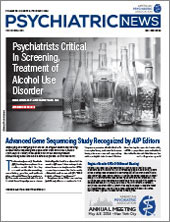The COVID-19 pandemic rapidly transformed and disrupted every aspect of our society. We witnessed the pandemic’s extraordinary impact on health care systems in general, and mental health care specifically, throughout the world. The education of medical students, residents, and fellows was seriously disrupted, leading to rapid accommodations that were reflexive and not fully understood in terms of the preparation of the workforce to care for patients and communities with growing mental health needs. Trainees and faculty continue to confront serious emotional, psychological, logistical, technical, and social challenges.
Undergraduate and Graduate Medical Education
We do not yet have a full accounting of the impact on the knowledge, skills, and professional development of medical students when schools were forced to shut down and most learning became virtual. One uniform observation, however, is how the overall level of clinical exposure, supervision, and feedback has been tangibly compromised due to multiple systemic factors during the pandemic.
Presumably, as the pandemic fades and medical education returns to a new equilibrium, newer generations of students may not suffer the same limitations on their clinical, psychological, and moral development as the current students in training. Those affected are a sort of “lost generation” who came into their professional identity during the pandemic. These trainees may feel insufficiently prepared to undertake the next stage of their medical career. For this particular group, it would be worthwhile to provide supplemental training opportunities in an optional and nonpunitive fashion in both undergraduate medical education (UME) and graduate medical education (GME) sectors. An optimal balance must be struck between an empathetic, compassionate attitude in medical education and the need for proper development of clinical competency and professionalism in our future generation of physicians.
An important step to highlight in the transition from UME to GME is recruitment. A big question is looming on how to best proceed, for both institutions and applicants, beyond academic year 2023-2024, which is another virtual recruitment cycle as per national organizations’ recommendations.
During the pandemic, we observed the emergence of new curriculum content in residency education, such as pandemic- and disaster-related topics as well as telepsychiatry. In terms of curriculum delivery, a nuanced approach needs to be employed in determining whether to return to traditional learning methods, continue virtual learning, or adopt a hybrid model.
Diversity, Equity, and Inclusion
Throughout the pandemic, both trainees and faculty expressed moral concerns about health inequities becoming even greater than before, tethered to the growing public awareness of the social determinants of health and the ravages of “isms” and phobias (for example, racism, sexism, ageism, homophobia, and transphobia) on communities from which our patients come. Despite this, we have observed a disconcerting national trend over the past year in which the funding for diversity, equity, and inclusion programs is being cut in higher education and corporate America. Regardless of the political winds, it is imperative that we continue to promote diversity, equity, and inclusion in psychiatric education to nurture a conducive learning environment for all of our trainees and faculty.
Challenges involving the psychiatric training of international medical graduates (IMGs) must also be addressed, given how important IMGs are in delivering mental health care across the United States.
Wellness
Some of the universal stressors throughout the pandemic impacting every phase of psychiatric education included risk of illness/death due to exposure; isolation from social/professional support system; physical/mental/emotional exhaustion; and significant feelings of guilt, helplessness, hopelessness, cynicism, and injustice regarding “abandoning” disadvantaged patients without virtual access during a time of increased threat and loss. That last impact in particular may have resulted in moral injury and burnout that many trainees and faculty have experienced.
A silver lining of the pandemic is the raised awareness of the emotional and logistical toll experienced by health care workers who served during the public health crisis. This has translated into an increased focus and proactive stance by educational institutions toward addressing trainees’ mental health. It is time for us to double down on this momentum in developing robust, sustainable wellness pathways for our trainees and faculty with appropriate support from our institutions.
Faculty Development
The transition from traditional learning to virtual learning has exposed generational differences in the ease and comfort with which each group has adopted the new modalities. Addressing the varying needs of both faculty and trainees requires time and thoughtful consideration. This highlights the glaring need for appropriate, dedicated educational time for our faculty and training directors now more than ever.
Workforce Development
A crucial area that needs attention is the psychiatric educator workforce. During the pandemic, we witnessed an alarming number of educators leaving academia, which underscores the need for recruitment and retention efforts. High-quality resources should be allocated to develop junior faculty. Instead of budding educators having to pay the institutions for professional development opportunities such as Master Teacher Programs, talented faculty should be actively recruited and provided with incentives (stipend, reduction in clinical requirements, professional mentoring, and so on).
Clinically, the pandemic greatly exacerbated mental health issues among children and the gap between the need for care and the availability of psychiatrists and mental health professionals who can care for them. The workforce shortage in this area is not new—despite the exponentially rising demands, there has not been a corresponding course correction in supply, which calls for our urgent attention.
Opportunities for Innovation
While it is understandable to keenly feel the losses we suffered in our education system, we would be remiss if we did not recognize and capitalize on the unexpected gains borne out of the pandemic-related changes. Prior to the pandemic, the innovations in psychiatric education occurred mostly on an incremental basis. The speed and uniformity with which we adopted virtual learning and telepsychiatry practice were unprecedented, demonstrating that we (and the systems in which we work) are indeed capable of paradigm-shifting innovations. We need to conduct a systematic evaluation of the education innovations implemented during the pandemic to ensure that they are indeed relevant and effective going forward.
Conclusion
Since March 2020, we have been training the next generation of psychiatrists in uncertain times within a rapidly evolving landscape, yet ultimately, our mission is the same—to prepare trainees to be clinically competent and aware of their strengths and areas that need improvement as part of their lifelong learning process. Our workforce in psychiatry has never been more important, and the cultivation of our trainees—as well as their teachers, supervisors, and mentors—is paramount. Managing the lingering impacts of this pandemic will require considerable information, flexibility, honesty, and a commitment to understand and respond to the changing health care and social environments. In addition, we as psychiatric education leaders must go beyond curriculum reform to collaborate with other stakeholders to advocate for resources necessary for retooling our infrastructure and bringing about evidence-based innovations that will help advance our field. ■

